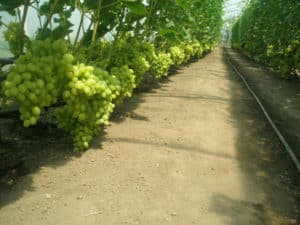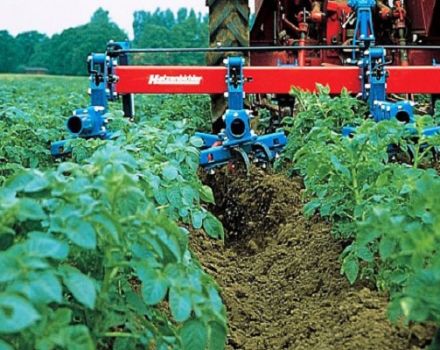Description and characteristics of the Valiant grape variety, rules of cultivation and storage
The Valiant grape variety is used for making wine, juice, freezing and fresh consumption. The vines are frost-resistant and vigorous. When growing fruits in a summer cottage, it is recommended to first study the features of caring for bushes. Proper care allows you to grow a good and large harvest.
Content
- 1 Valiant grape description
- 2 Breeding history and origin
- 3 Description of the bush
- 4 Positive and negative aspects of the variety
- 5 Characteristics and features
- 6 Ripening terms
- 7 Pollinating varieties
- 8 Description of the berry
- 9 Planting seedlings
- 10 What and for what to do when disembarking
- 11 Harvesting and storage
Valiant grape description
Valiant belongs to the universal varieties due to the variability of its application. The fruits are used for processing or consumption after harvest. Dark berries ripen in late August - early September.
Breeding history and origin
The variety was bred by crossing in 1967. Over the next several years, breeders selected the shape of the fruit and carried out a series of tests to achieve the best flavor characteristics.
Description of the bush
Vigorous and productive grape bushes. Each bush grows many bunches, the number of which depends on climatic conditions and care.
Vine
The vines are actively growing and are often used to decorate buildings. Vines require a dry climate to grow rapidly.

Foliage
The leaves are large, bright green. The foliage of the bushes is thickened and needs periodic formation.
Bunches
The bunches are dense and small. The average length of one bunch is 10 cm. Valiant's fruits are black and round in shape. The peel of the berries is exfoliated in a "bag"
Positive and negative aspects of the variety
Valiant has a number of positive and negative characteristics. The main advantages of the variety are high taste characteristics and resistance to negative influences. The disadvantages include the complexity of care and demanding climate.
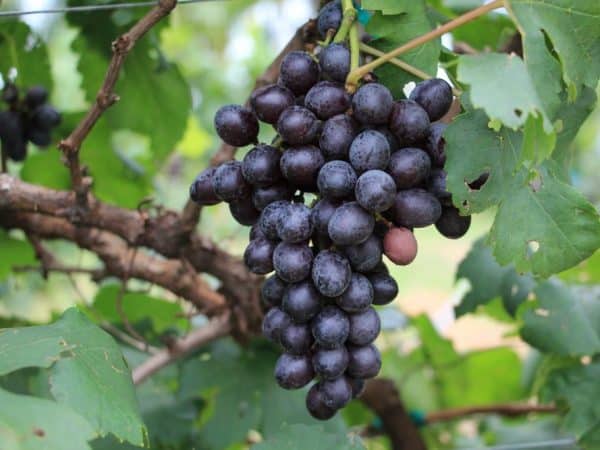
Characteristics and features
Like other varieties, Valiant has individual characteristics. To ensure proper care, you should be familiar with the characteristics of the grapes.
Increased yield
Provided a suitable climate and constant care, the bushes bring a stable harvest.In terms of volume, the yield exceeds a number of other varieties.
Resistance to subzero temperatures
Despite the demanding climate humidity, the variety is frost resistant. Returning cold and high rainfall do not affect yields.

Resistant to pests and diseases
The variety is resistant to the main diseases inherent in grapes. With improper care, fungus may develop.
Ripening terms
The Valiant grape belongs to the early maturing varieties. The first berries ripen in late summer - early autumn.
Pollinating varieties
For intensive vineyard growth, it is recommended to grow several pollinating varieties side by side. For Valiant, varieties such as Arcadia, Rusbol and Radiant Kishmish are suitable.
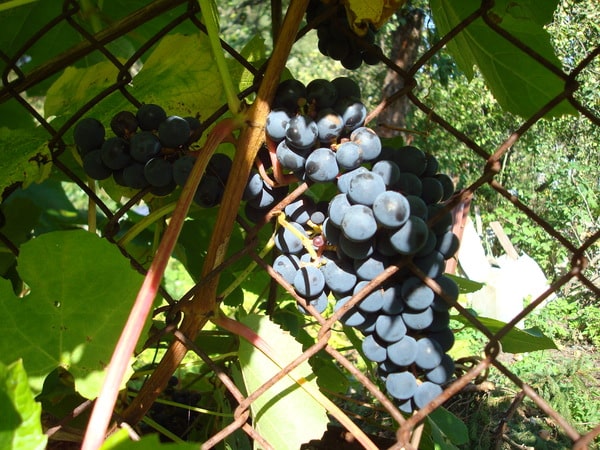
Description of the berry
By their appearance, the berries are distinguished by a rich black color. The average weight of berries is 1.5-2.5 g. The weight of one bunch reaches 85-95 g.
Sweetness and acidity
The sugar content of the variety does not exceed 20%. The acidity is 10 g / l.
Average berry diameter
The diameter of one berry is 1-2 cm. The size of the fruit is influenced by the ambient weather conditions, the cultivation characteristics and the fertilizers used.

How many seeds are in the berry
The number of seeds in fruits is 3-4 pcs. The bones are soft and easy to grind during processing.
Planting seedlings
For the correct growth of seedlings, a number of rules and planting features must be observed. It is important to pre-prepare the site, pick up healthy seedlings and provide constant care.
Site preparation for planting
Sunlit areas protected from wind blowing are suitable for seedlings. It is recommended to grow grapes near fences so that the vines form freely.
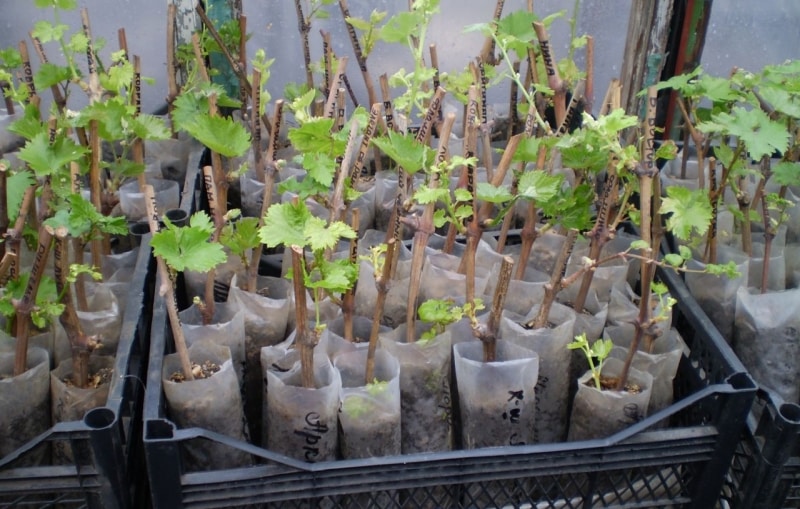
Choosing seedlings
Valiant's seedlings must have normal growth of at least one shoot.
A condition for the active growth of bushes is the presence of at least two developed roots at the base of the stem.
What and for what to do when disembarking
When planting the Valiant variety, you should adhere to a certain algorithm. The disembarkation process includes the following steps:
- digging a pit of medium depth;
- top dressing;
- placement of seedlings and backfilling with soil;
- mulching and watering.
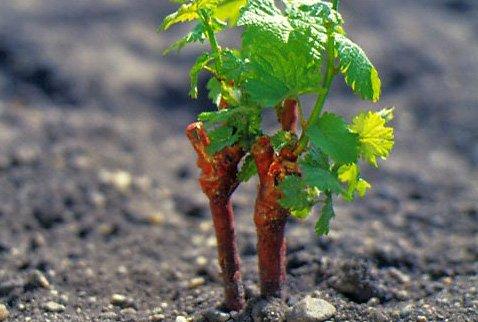
Growing and care
Proper care of the bushes affects the fruiting of grapes. In the process of cultivation, vines should be formed, watering and fertilizing should be applied.
Pruning
Pruning is carried out during the ripening period of the berries or as needed. The purpose of pruning is to saturate the fruit with nutrients and give the vines a decorative look.
Watering
It is necessary to water the grapes as the land dries up, avoiding waterlogging. After absorbing water into the soil, loosening is carried out around the bushes.

Fertilizer
Root dressing improves the protective functions of the plant, increases the yield and positively affects the taste characteristics. It is recommended to fertilize the bushes in spring or autumn, using nitrogen and potassium-phosphorus fertilizers.
We protect against diseases and pests
To prevent the development of diseases and destroy pests, plants are sprayed with preparations of a fungicidal and insecticidal series. It is allowed to use protective equipment for prevention purposes.
Ripening and fruiting period
Valiant begins to yield in early autumn. The ripening of berries is influenced by climatic conditions and features of care.
Harvesting and storage
After the berries ripen, it is recommended to cut off the bunches with pruning shears, trying not to erase the wax bloom from the fruit. When planning to store your crops for a long time, it is better to harvest grapes in dry weather. For the safety of the fruits, it is necessary to place them in a refrigerator or a cool place, maintaining the humidity of the room within 90-95%. The optimum storage temperature is 0-2 degrees.
